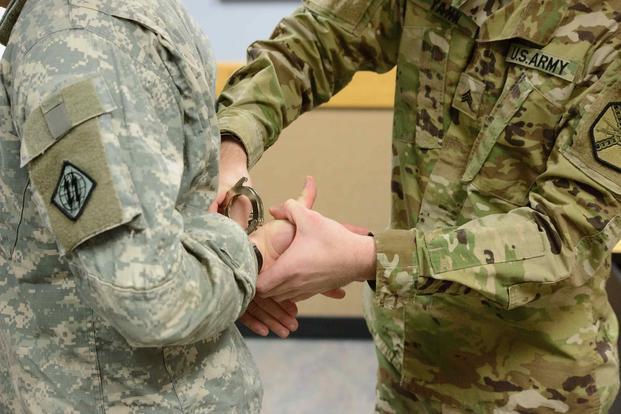
The Army is fielding a sophisticated new computer dashboard tool this month that’s designed to help commanders track their soldiers’ risky behaviors and compare them to a service-wide picture.
The New Commanders’ Risk Reduction Toolkit (CRRT) is currently being fielded to active-duty units and will be sent to the Army’s Reserve component in early 2021.
The CRRT is the result of six years of collaborative effort, part of a larger Army Risk Reduction Program to help leaders more efficiently track soldiers with financial issues and drug and alcohol problems — as well as those who have a history of criminal activity, suicide attempts, domestic violence and child abuse, Randy Lane, director of Analytical Assessments at the Army Resilience Directorate, told an audience Wednesday at the Association of the United States Army’s virtual annual meeting.
Read Next: Army Wants to Spot-Promote Officers Moved Into Hard-to-Fill Jobs
“It provides a consolidated picture of soldier risk and trends that are intended to help leaders develop proactive strategies and strengthen soldiers in units,” Lane said.
The CRRT is being fielded at a time when Army leaders are stressing the importance of building unit cohesion and ensuring that leaders know the issues that might affect their soldiers’ performance. The service is also planning to launch a new mobile app designed to help squad leaders more effectively advise and connect with their soldiers — part of Sergeant Major of the Army Michael Grinston’s “This is My Squad” initiative.
The new CRRT will let company- and battalion-level commanders see a “by-name” listing of all soldiers in the unit. Commanders at this level can view a detailed timeline for each soldier that displays key events such as entry into service, deployments, promotions, permanent change-of-station moves and any Uniform Code of Military Justice actions, as well accidents, injuries and medical profiles, Lane said.
“This comprehensive picture helps command teams identify any risk history and strong performers who can help them sustain readiness and possibly reduce risk across their formation,” he added.
Leaders can also tailor the timeline to show soldier risk events within the context of operational events such as training and deployments, Lane said.
Only company and battalion commanders have access to see each soldier’s personal identifying information, along with very limited protected health information, he said.
Brigade-level leaders can use the CRRT to view aggregated information, so they can determine trends and patterns and manage risk across their formation, Lane explained.
Brigade commanders can view risk trend rates per 1,000 and compare them with division, installation, Army command and active Army rates per month to see how their unit is performing in comparison, he said.
Lane stressed that the CRRT is only a tool for alerting commanders of potential trends in risky behaviors.
“The system was never intended to turn the company commander and first sergeants and sergeant majors into the subject matter experts,” he said. “It was only designed to alert those leaders that there may be a problem and try to bring together many of the different behaviors and risk factors so that they could see the potential interaction of those factors, and maybe see an elevated risk for their soldiers and then contact the [appropriate] subject matter experts.”
Lane added, “As we finalize fielding, we will continue to refine the system based on user feedback and refine intervention strategies to help commanders be proactive.”
Source: Military News



